In this blog, I talk about why your dog growls at your baby, and how to stop it FAST for a peaceful, loving bond!
JOIN MY FREE REACTIVITY CLASSWhen your dog growls at your baby, it indicates several concerns, including fear, anxiety, reactivity, or territorial behavior. A dog growl is a warning sign that says, “Stay away,” and it's not a behavior issue you should ignore.
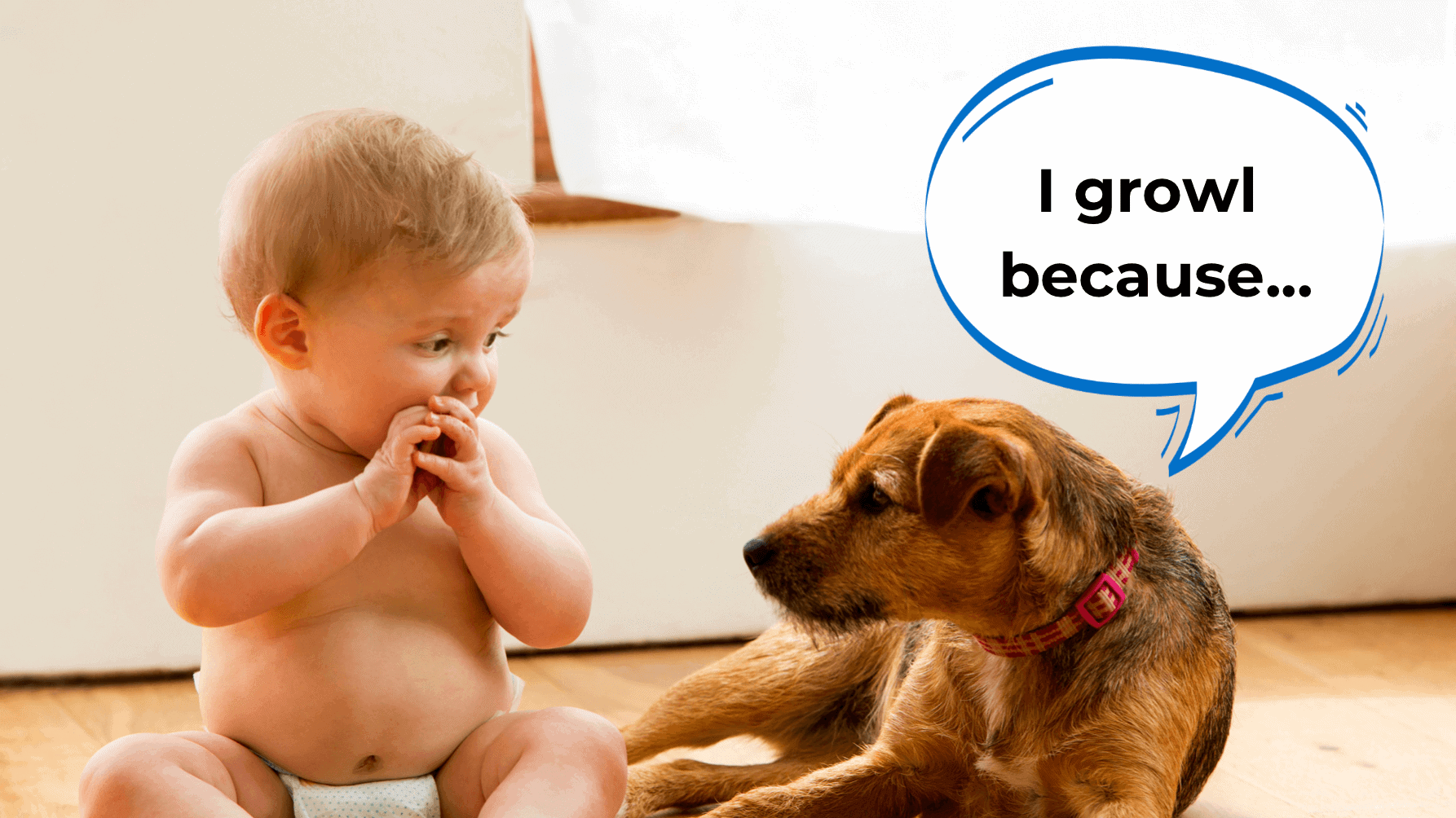
If your dog growls at your baby, it's crucial to address the underlying reasons for their behavior. Growling can be a sign of aggressive behavior and can be resolved with proper training, exposure, positive association, and understanding. When left unresolved, growling can escalate into more dangerous behavior like lunging and biting.
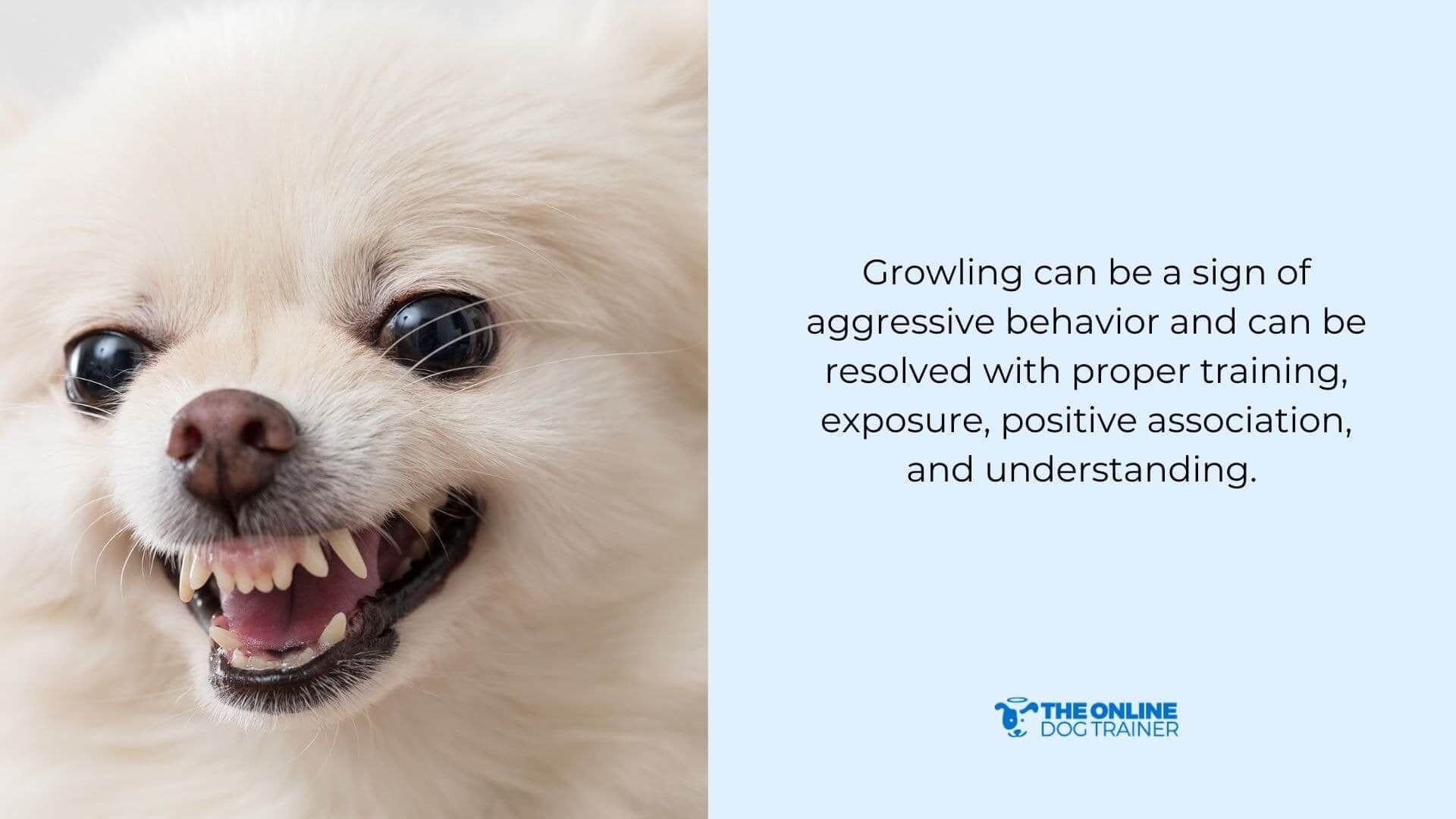
If you catch your dog growling at your baby, it's important to address the issue ASAP. Here are some things you can do.
Key Takeaways
- A growl is your dog's way of saying “back off!” Just like we use words to communicate, dogs use vocalizations like growls to express themselves. It's not always a sign of aggression – sometimes it's just playful – but it's a clear signal that your dog needs space, especially around your little one.
- Don't hesitate to act swiftly. If your dog growls at your baby, calmly but quickly separate them. Take a moment to observe your dog's body language: Are they tense? Showing teeth? These are signs that they're feeling threatened. Guide your dog to a quiet, safe spot where they can relax.
- Work on the bigger picture. Growling is often a symptom of a deeper issue. To address it long-term, focus on strengthening your leadership role, rewarding good behavior, and gradually introducing your dog to the baby in a positive way. If the growling continues, don't hesitate to seek guidance from a qualified dog trainer or behaviorist.
Table of Contents
Definition of Dog Growling and What It Means in Dog Communication
Dogs use growling in different situations, from playtime to guarding their favorite bone. Most dogs release a low rumble to communicate fun, protectiveness, and the need to attack.
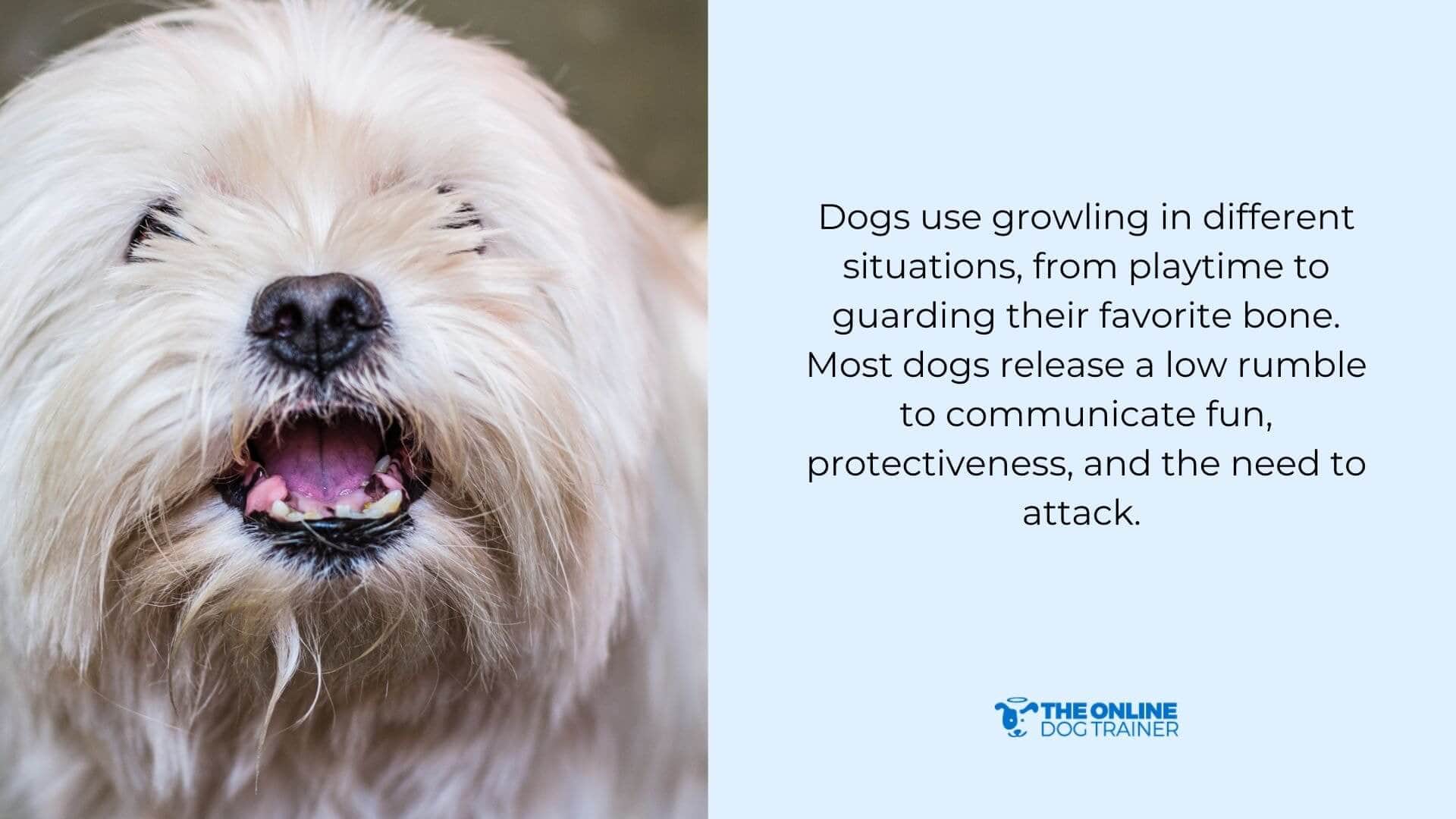
Here's what I want dog owners to understand: dog growling is not immediately bad, but it can escalate quickly. If you have a baby who's always in the same room as your dog, I want you to be very particular about different forms of growling.
FREE REACTIVITY MASTERCLASSPlay Growling
Just like barking, growling is a way dogs communicate, and there are many reasons why they might do it. Some growls are actually positive! Many dogs make grumbling sounds during playtime because they're having fun. Have you ever seen two dogs wrestling? You probably heard some growls. You might have thought they were getting too rough, but it was likely just part of the game.
Growling during play doesn't mean your dog is aggressive. It usually means they're having a great time. Your dog might even growl during a really good cuddle or petting session. Many dogs use growls to show they're happy or to say hello. These kinds of growls mean they're content.Stress Growling
Stress growls are a warning sign. They tell others to back off before the dog feels they must take further action.
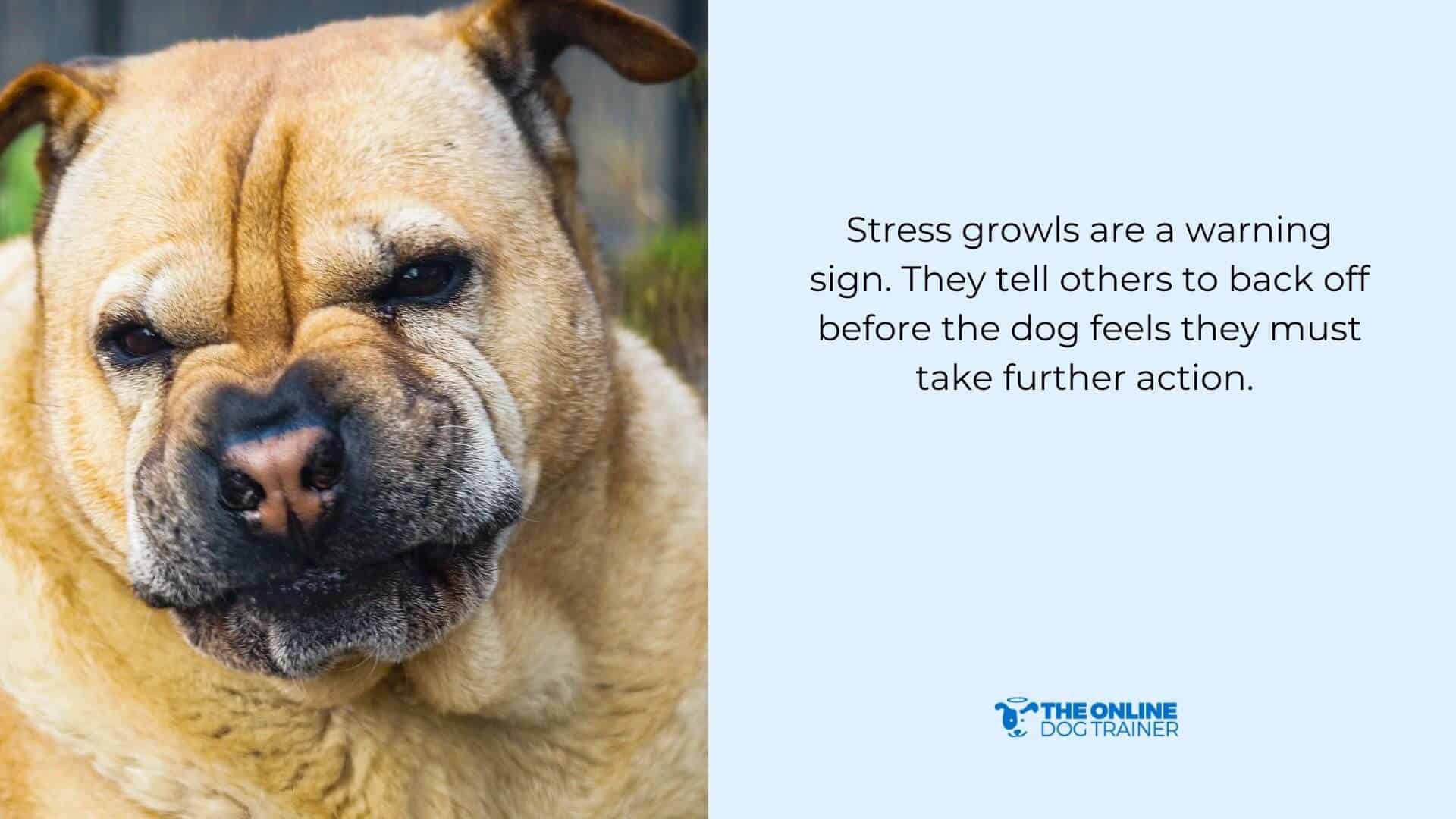
Most dogs don't want to attack or bite. They growl to prevent the situation from getting worse. This makes growls very valuable. A dog that attacks without warning is hazardous. Growls serve as a cautionary signal, offering a glimpse into your dog's feelings and prompting you to take action to prevent any harm.
Warning Growls
Of course, not all growls are happy. A dog might growl to warn another dog or because they feel trapped. Growling is also common when a dog is guarding something they think is theirs. An injured dog will often growl to keep others away. In these cases, growling means something is bothering your dog.
Unlike playful growls, you can think of these as stress growls. They tell you your dog is uncomfortable, which is essential to know. This gives you a chance to step in and change the situation before your dog feels like they need to bite.
Why Dogs Growl At Babies
Dogs are naturally terrified of babies. These babies poke their eyes, jump on them, and even climb on them while they sleep! Babies don't know personal space; and personal space matters to dogs a lot!
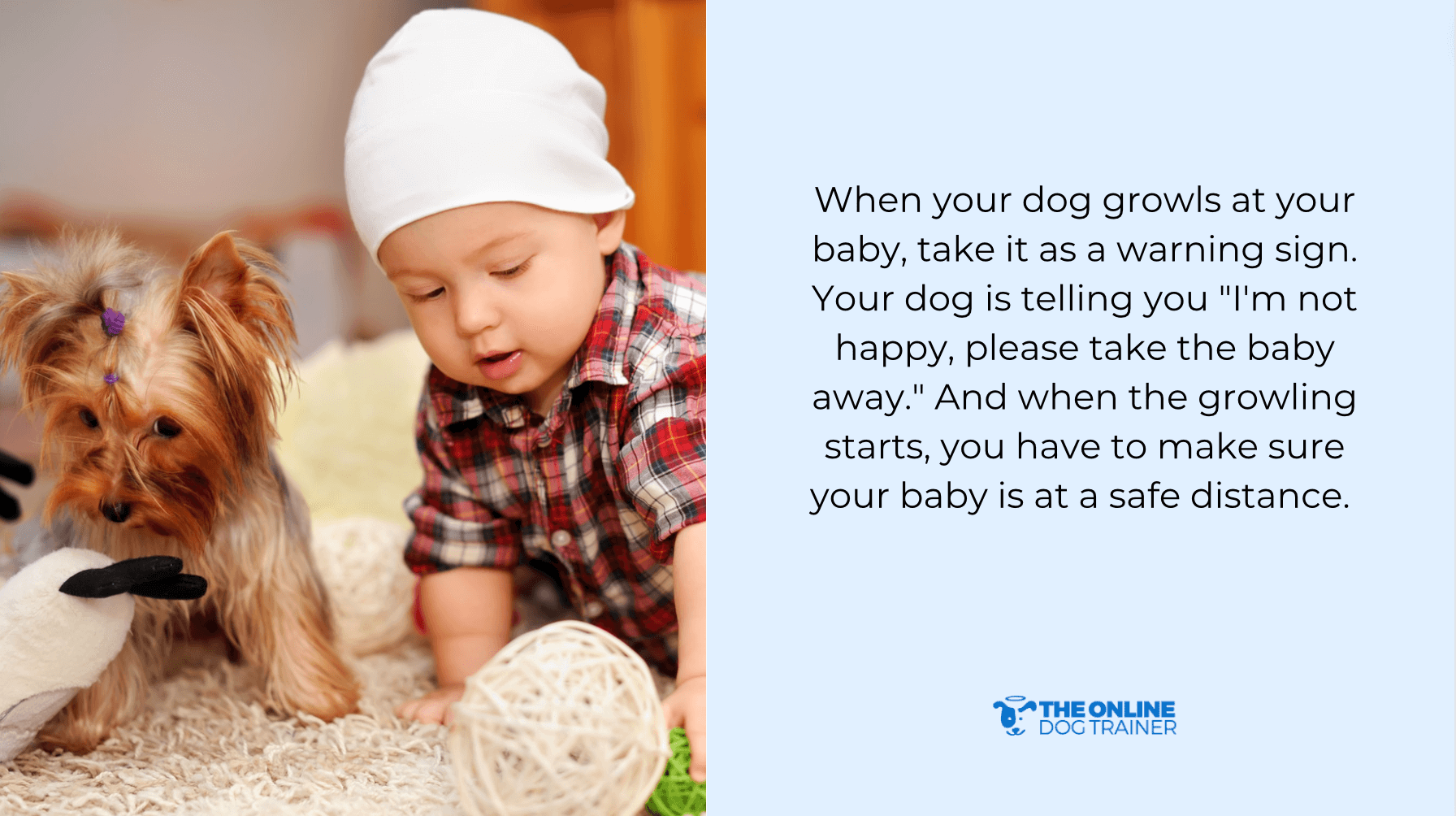
When your dog growls at your baby, take it as a warning sign. Your dog is telling you, “I'm not happy; please take the baby away.” When the growling starts, you have to make sure your baby is at a safe distance.
REACTIVITY SOLVED (NO FOOD, NO FORCE)Dog Growls at Babies When You Have Not Encouraged a Good Relationship Between Your Baby and Your Dog
First, understand that tension often comes from a lack of bonding and feeling left out. When the baby arrives, include your dog; don't exclude them, and definitely don't lock them away.
Show your dog the same love you show your baby. During feeding time, have them chill nearby and reward their good behavior. When the baby's upset, give your pup a chew toy to keep them occupied. It's about creating positive associations between the two to prevent defensive, territorial behavior.
Remember, you should set your dog up for success, not failure. This means creating a loving and inclusive environment for your dog and your little one.
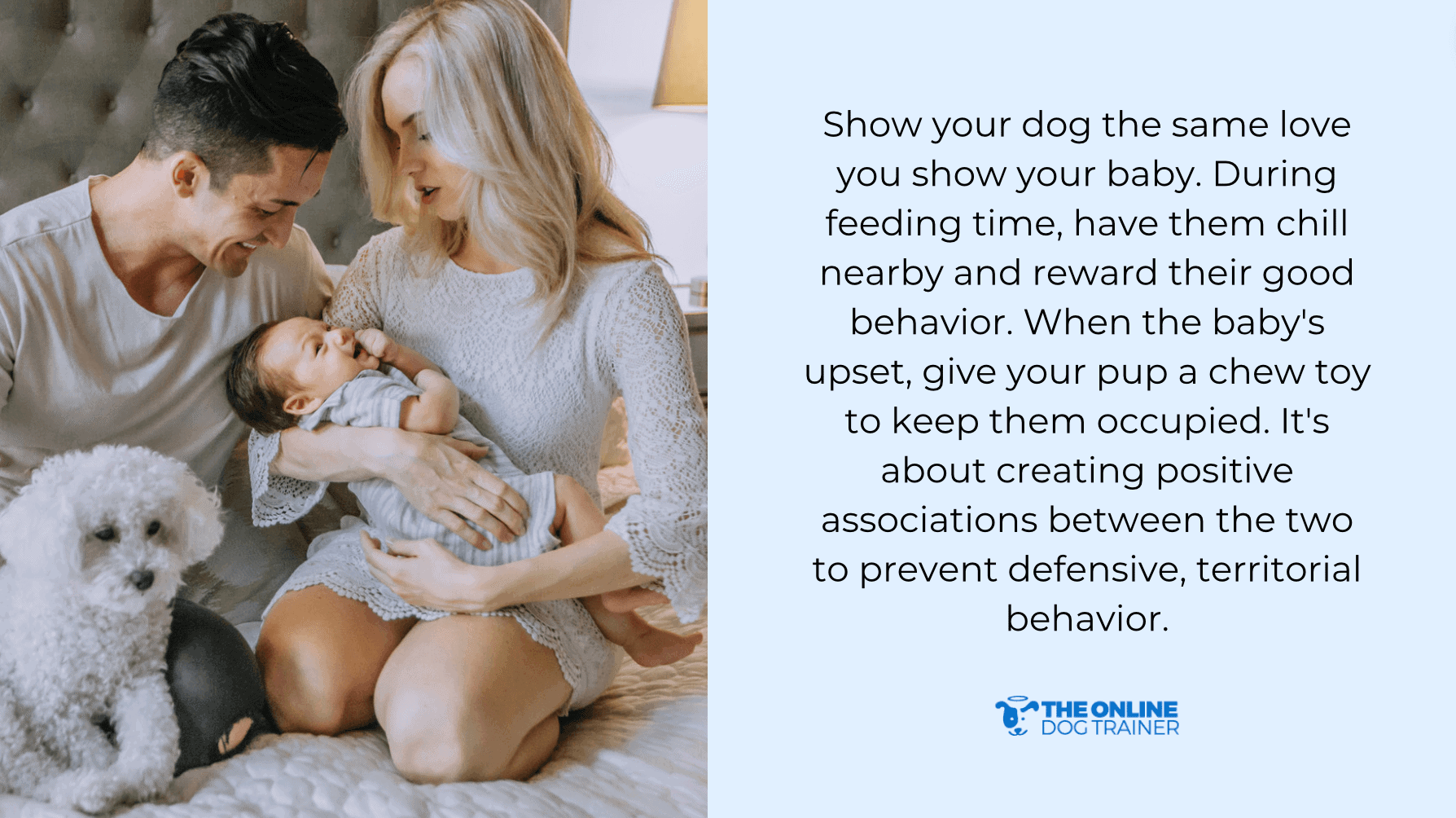
Dog Growls at Babies When There Are Boundaries Crossed
Respecting your dog's space and food is crucial for preventing growling incidents with your baby.
Dogs can be territorial, and their personal space, including their bed, toys, and especially their food, should be off-limits to curious little hands.
If your dog eats or enjoys a chew toy, ensure your child understands they cannot approach. Dogs can become possessive of their food and growl or snap if they feel it's being threatened. This applies to treats hidden around the house as well; keep them out of reach to avoid any accidental encounters.
Respecting these boundaries is not only essential for your dog's safety and well-being, but it also instills valuable lessons in your child about respecting animals and their needs, giving you confidence in your parenting.
REVERSE REACTIVITY (FREE WEB CLASS)The Subtle Signs: When a Dog Growling at Baby Becomes a Dangerous Situation
You can usually tell if a growl is happy by looking at your dog's body language.
Any growling is probably fine if they're showing a relaxed, playful grin or bowing down to invite play. But if their body seems tense, they're staring hard, and their growl sounds harsh, take it seriously.
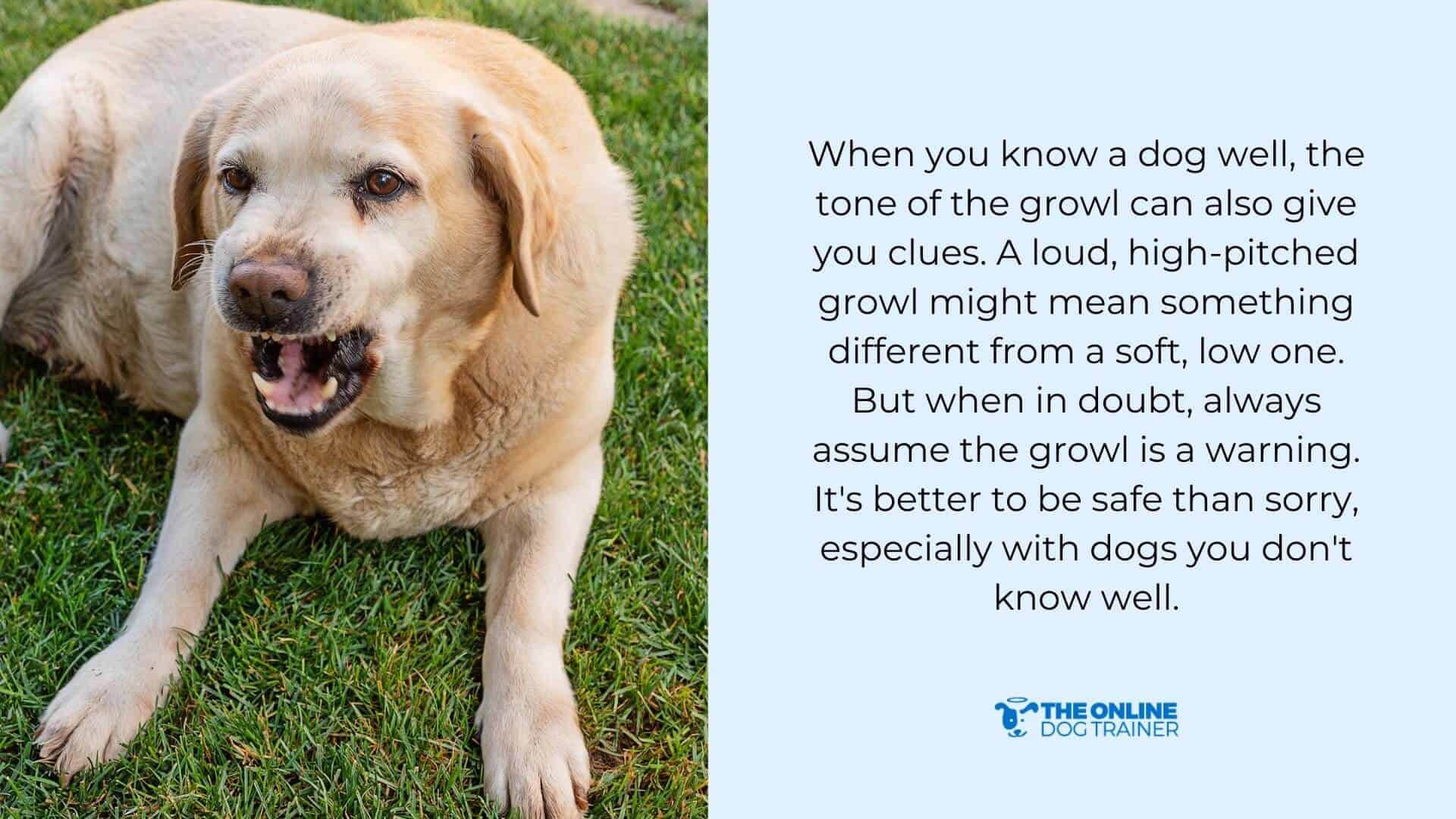
When you know a dog well, the tone of the growl can also give you clues. A loud, high-pitched growl might mean something different from a soft, low one. But when in doubt, always assume the growl is a warning. It's better to be safe than sorry, especially with dogs you don't know well. Teach every family member — especially children — to be cautious around any growling dog, even if it seems like they're playing.
GET MY 5 GOLDEN RULES FOR FREE!Why Do Dogs Growl at Babies? 4 Reasons Why
Bringing a new baby home is a joyous occasion, but it can also be a stressful time for your furry family members. A dog's growl directed at a baby can be alarming, but it's important to understand the underlying reasons behind this behavior.
1. Fear and Anxiety
Dogs thrive on routine and familiarity.
A new baby changes a household significantly and if your dog never met a baby their entire life, seeing a little human can be jarring.
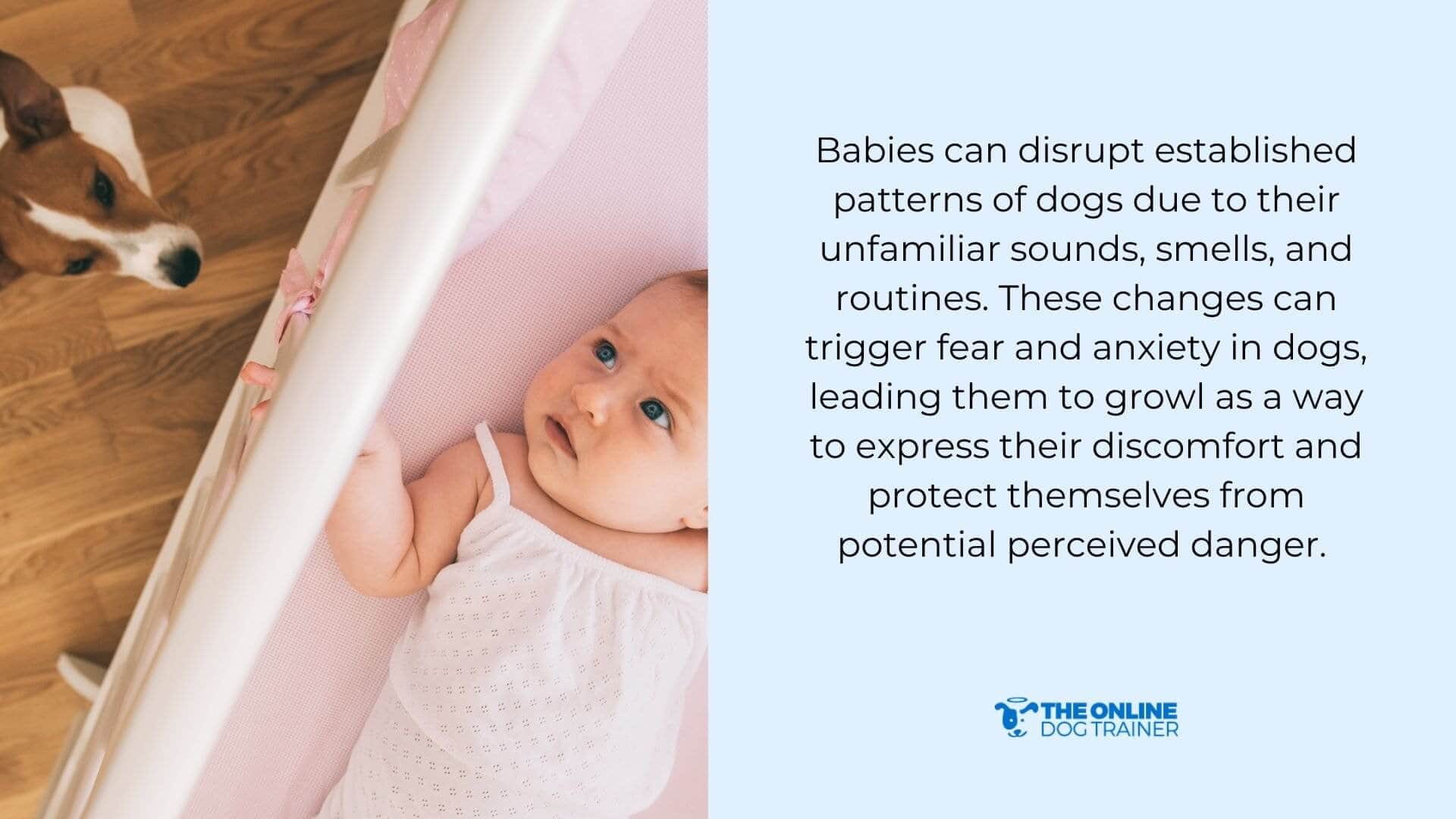
Babies can disrupt established patterns of dogs due to their unfamiliar sounds, smells, and routines. These changes can trigger fear and anxiety in dogs, leading them to growl as a way to express their discomfort and protect themselves from potential perceived danger.
It's crucial to create a safe space for your dog, free from the baby's reach, where they can retreat when feeling overwhelmed. Gradual introductions and positive reinforcement can help your dog adjust to the new family member over time.
2. Territorial Behavior Towards Babies and Other Dogs
Dogs are naturally territorial, and some may consider the baby an intruder in their space.
Growling serves as a warning, signaling to the baby (and you) to keep a safe distance. This doesn't necessarily mean your dog dislikes the baby; it's simply their way of saying, “This is my territory, and I need you to respect my boundaries.”
To a dog unfamiliar with babies, your crawling, crying, shouting baby is a threat they don't want near their space of comfort. Their territorial behavior is their way of protecting their space.
3. Lack of Socialization
Dogs that haven't been exposed to babies or young children may not know how to interact with them. They may view babies as unpredictable or even threatening, leading to growling.
Early socialization with children of different ages is crucial for dogs to learn appropriate behavior around them.
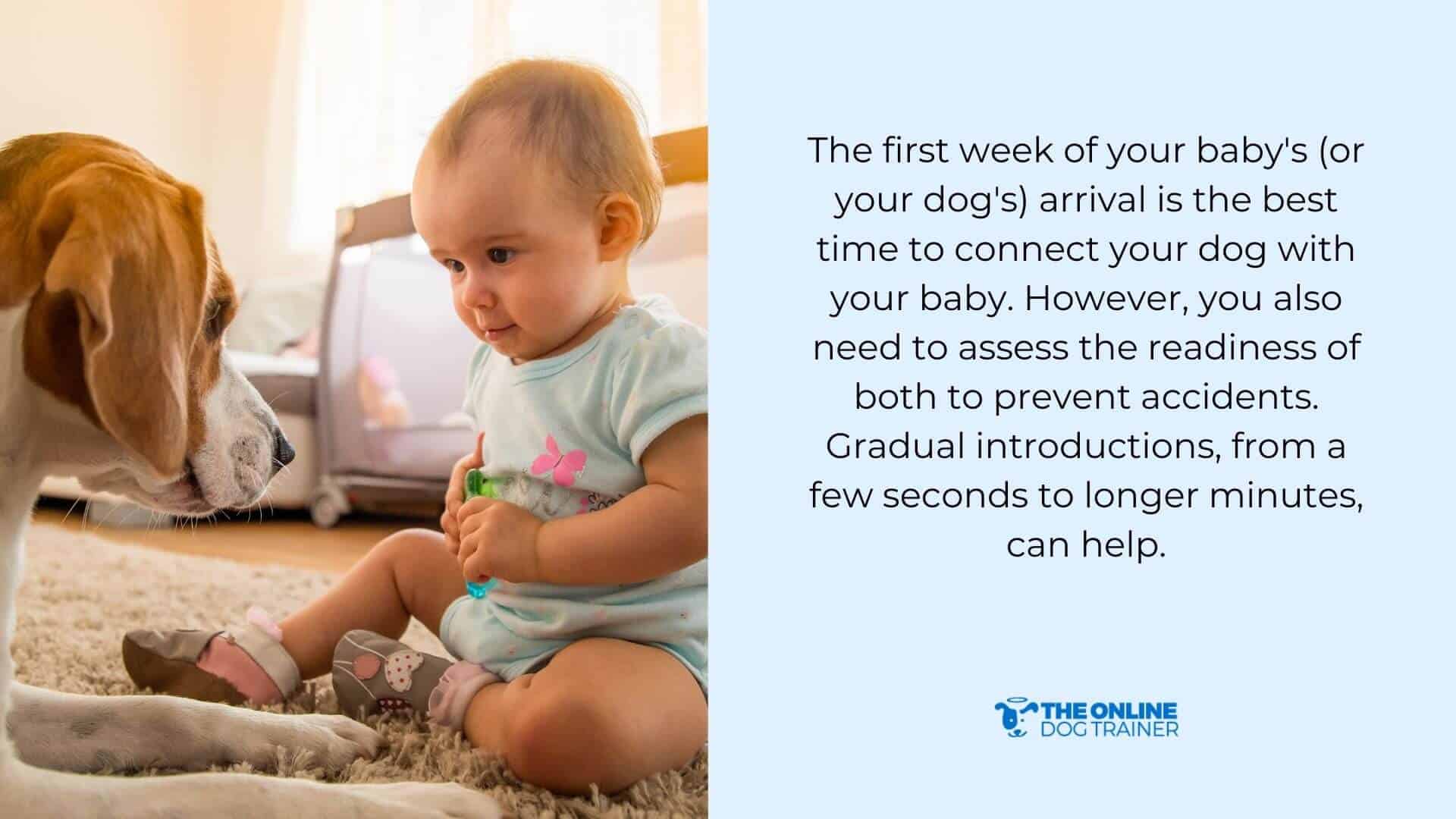
The first week of your baby's (or your dog's) arrival is the best time to connect your dog with your baby. However, you also need to assess the readiness of both to prevent accidents. Gradual introductions, from a few seconds to longer minutes, can help.
REVERSE REACTIVITY (FREE WEB CLASS)If your dog lacks this socialization, consider consulting a professional dog trainer to guide you through the process.
4. Medical Issues
Sometimes, a dog's growl can signify pain or discomfort. If your dog is suddenly growling at the baby after a history of peaceful coexistence, a medical issue might be the culprit. A visit to the veterinarian can rule out any underlying health problems contributing to the aggression.
When Dog Growls at Baby: Immediate Actions You Should Do to Stop a Dog Growl From Becoming Dangerous
Never take a growl towards your child lightly. If you've started to hear your dog make low rumbles around your baby or toddlers, here's what you need to do.
In a way, he's telling me that he'd like to slow the relationship down!
Action #1: Immediately Separate the Dog and Child
Time is of the essence. A growl can escalate into a bite or lunge in seconds. If your baby has wandered near your dog or is playing near them and you hear a growl, quickly and calmly remove the child from the situation. Your priority is to ensure your child's safety.
Action #2: Assess Your Dog's Body Language
Observe your dog's demeanor closely. Are they exhibiting other signs of aggression? Look for these tell-tale signs:
- Hard stare: Eyes fixated on the baby with a tense or glazed look.
- Hackles raised: The hair on their back standing on end.
- Stiff posture: Body rigid and tense.
- Growling or snarling: Low, guttural sounds.
- Showing teeth: Lips pulled back to reveal their teeth.
These signs indicate your dog is feeling threatened or stressed, and their growl is a warning to back off.
REACTIVITY SOLVED (NO FOOD, NO FORCE)Action #3: Guide Your Dog to a Safe Space
Approach your dog cautiously, avoiding direct eye contact or sudden movements.
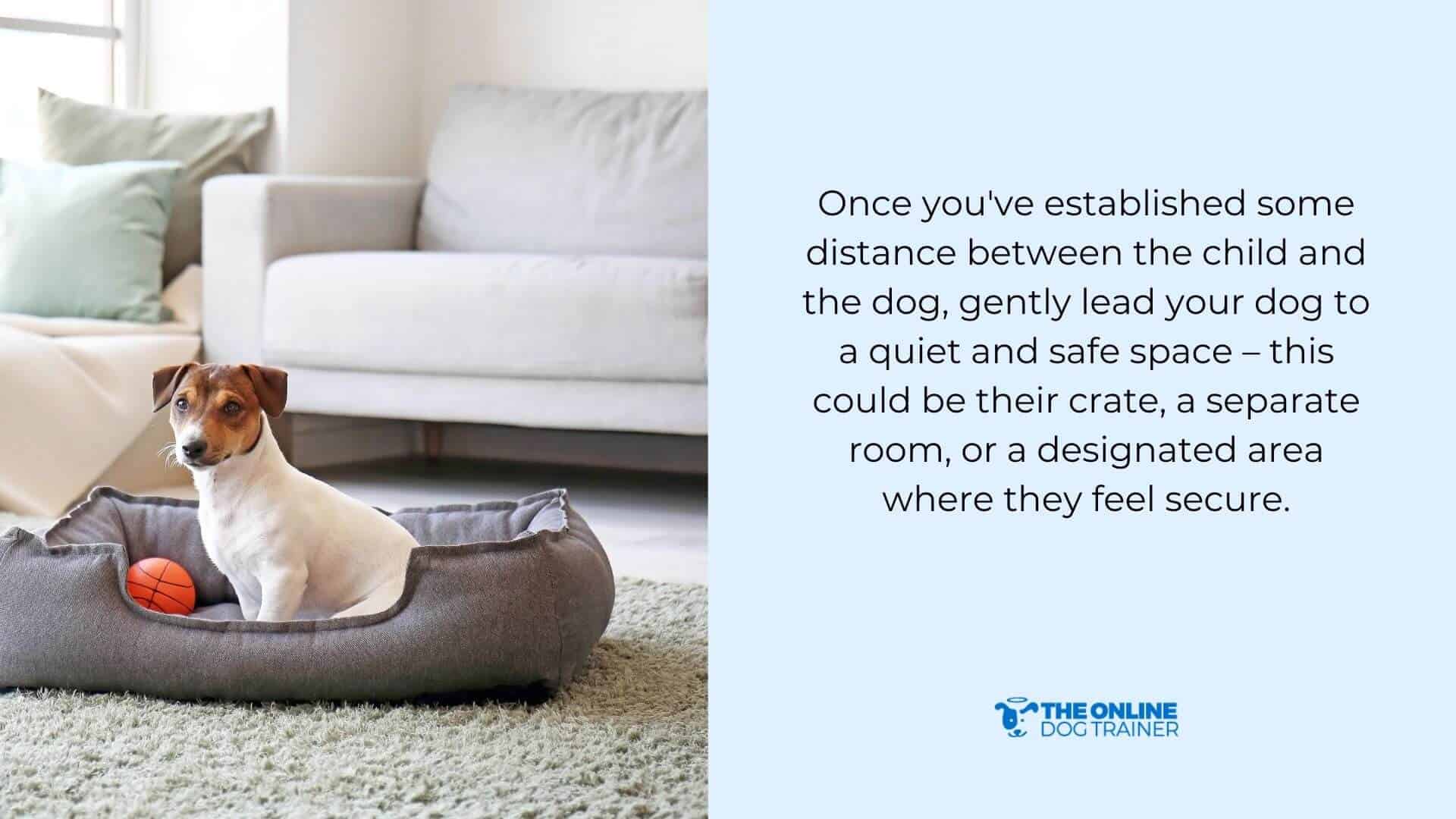
Once you've established some distance between the child and the dog, gently lead your dog to a quiet and safe space – this could be their crate, a separate room, or a designated area where they feel secure. Allow them time to decompress and calm down.
Action #4: Maintain Distance
Ensure that children and other pets stay away from your dog's safe space until it has completely relaxed. Give your dog the space it needs to recover from its anxiety or fear.
When You Are Dealing With Dog Growling: Long-term Strategies to Change a Growling Behavior
#1: Establish Leadership and Trust
Before diving into specific training, solidify your role as the pack leader. This will reassure aggressive dogs that you're in control and that they can trust your judgment.
A dog's food and property are the most important to them, so show them you have control of them, too. Show your dog that you have everything that's important for them: food, protection, and driving off danger under control.
JOIN MY FREE REACTIVITY CLASSPractice consistent obedience training and set clear boundaries. When your dog sees you as a capable leader, they'll be less likely to feel the need to take charge and protect you from the perceived “threat” of your baby.
#2: Positive Reinforcement Training
Reward your dog for remaining calm and exhibiting positive behaviors around the baby.
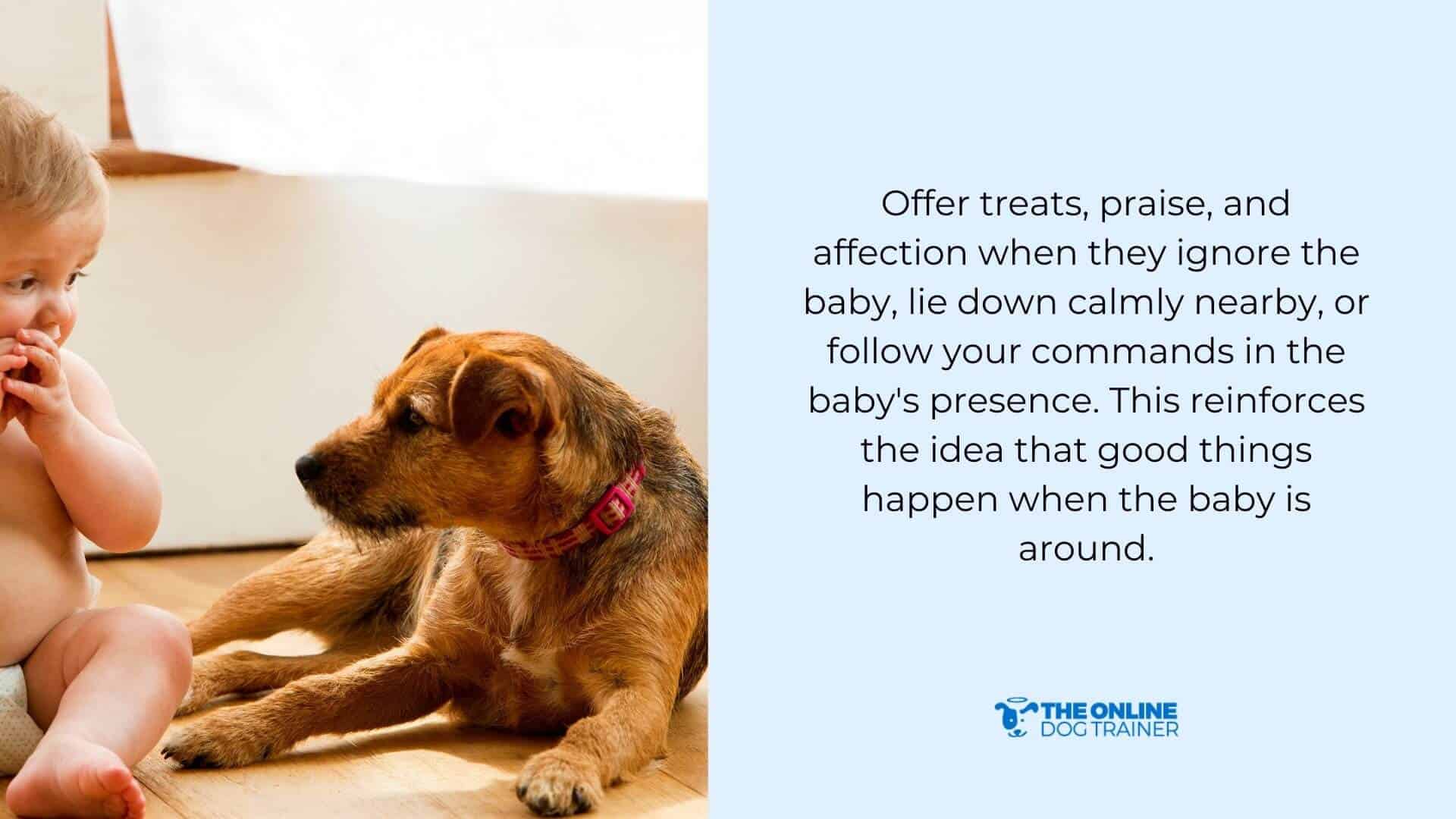
Offer treats, praise, and affection when they ignore the baby, lie down calmly nearby, or follow your commands in the baby's presence. This reinforces the idea that good things happen when the baby is around.
#3: Gradual Desensitization
Slowly introduce your dog to the baby's presence and sounds. Remember: follow your dog's own pace.
Start with the baby at a distance and gradually decrease the space between them as your dog relaxes.
Use a baby doll or recordings of baby sounds initially to help your dog adjust to the new stimuli. Pair these exposures with positive reinforcement to create positive associations.
LEARN THE DOG CALMING CODE (FOR FREE)#4: Creating Positive Associations
Make the baby's presence synonymous with good things for your dog. Doing this encourages your dog to know that a baby is not a threat but actually a good presence. This helps your dog associate the baby with positive interactions, which fosters a more relaxed and accepting attitude.
#5: Establishing Boundaries and Safe Spaces
Designate separate spaces for the baby and your dog.
Teach your dog to respect the baby's space by using commands like “leave it” or “go to your bed.” Reward them for staying within their designated area. This protects the baby and gives your dog a sense of security and control within their own space.
Also, instill the same in other animals at home that may come near your dog's safe place.
Consider providing a safe space for your dog, such as a separate room or a crate. A crate, when equipped with a blanket, can act as a cozy den where your dog can relax and de-stress for a few hours. While it may seem restrictive to us, many dogs find comfort and security in having their own designated space. It's a simple way to ensure their well-being and create a balanced environment for both your pet and your baby.
#6: Don't Neglect Your Dog, Make Them Feel Loved and Considered
A happy dog is a dog that doesn't need to feel threatened by the baby.
With the excitement of a new baby, it's easy to unintentionally overlook your dog's needs. But remember, your dog still craves walks, exercise, and playtime. They long for those runs in the park and those affectionate cuddles.
So, amidst the chaos of new parenthood, make a conscious effort to shower your dog with love and attention. Carve out time for those daily walks, play fetch in the backyard, and indulge in some good old belly rubs.
Creating a safe space for your dog is equally important. Whether it's a cozy corner with their favorite bed or a designated crate, having a personal retreat will help them feel secure and loved.
Dog Growling at Baby: When To Consult a Professional Trainer
Three critical factors should prompt you to consult professional help:
- When a dog starts growling at your child
- When a dog is persistent in their behavior of growling at your child
- When a dog attempts to hurt.
- When you're dealing with a big baby and smaller dog (and vice versa)
I always tell dog owners who are also parents of little kids to not dismiss growling as play.
JOIN MY FREE REACTIVITY WEBINARWhen it comes to kids, any rumbling or threatening sound from your dog should be consulted immediately. The tailored advice can help you understand why your dog behaves the way they do, and prevent your dog from hurting your child.
One angle you can look at when you're dealing with a growling problem is reactivity.
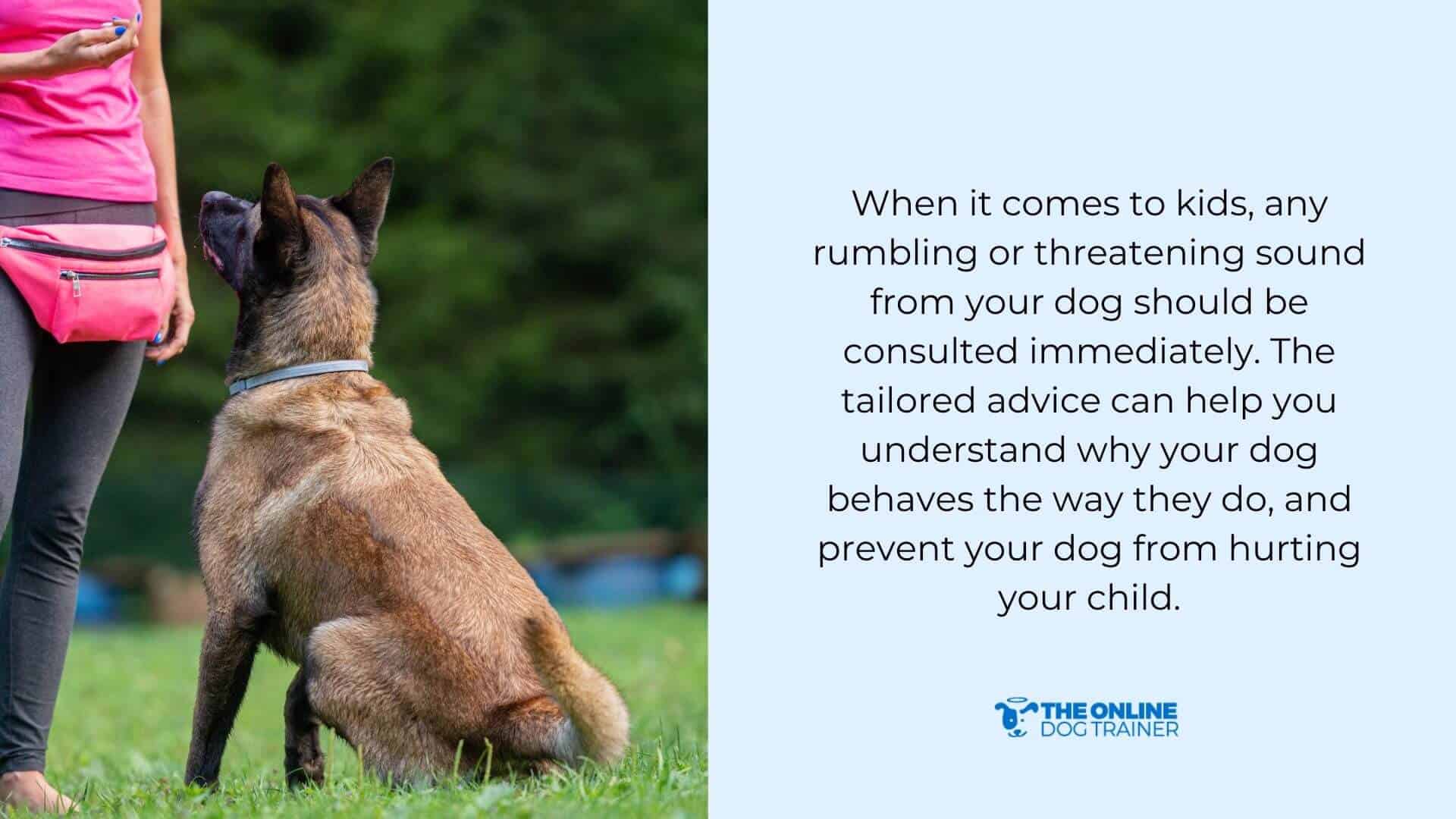
Reactivity is when a dog overreacts to simple, non-threatening stimuli, like your baby.
If your dog is reactive, treats, positive reinforcement, and other surface-level solutions will work only a little. You have to go to the root of reactivity to really know how to turn a growling dog into a calm, well-behaved pet.
Good news: I have a FREE reactivity webinar to any dog owner out there who thinks their dog is reactive. I share the essential tips to reactive dog training including how to train dogs to be calmer, and how to solve reactive issues from the root of the problem.
If you are interested, join here:
REVERSE REACTIVITY (FREE WEB CLASS)Yes, Your Baby and Your Dog Can Coexist Peacefully
Don't lose hope if your dog growls now; with your help your beloved baby and your dog can exist in safety and harmony.
I want you to remember these rules when you deal with a growling problem:
- Fear and anxiety triggers this behavior
- Babies are new to your dogs. Some dogs can become territorial.
- It's best to follow a slow and steady pace when introducing your dog to your baby
- With the help of a trainer, you can solve growling problems, especially the ones rooted in reactivity!
And please join my free reactivity webinar. You'll learn so much more about your reactive dog!
You got this.

~Doggy Dan






